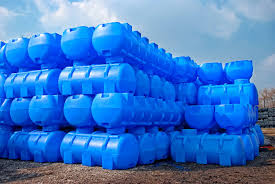Rotomolding also known as rotational mold is a process used to create hollow plastic components. It’s a versatile and cost-effective method that produces high-quality, durable products with consistent wall thickness. This method is extensively used in a variety of industries, including industrial, automotive, and consumer goods.
How Rotomolding Works
Rotomolding requires several important steps that include loading the mold, heating the mold, rotating it, cooling it, and then demolding. The process begins by placing a pre-measured amount of resin or plastic into a mold that is two-part. This mold then gets sealed and then heated, usually using an oven. As the mold heats up it starts to spin along multiple axes–usually in both a biaxial and a vertical direction. The rotation causes the plastic powder to melt and then evenly cover the surface within the mold.
After the plastic has completely covered the mold, and has fused together, the mold is typically cooled using water or air. The cooling process helps to solidify the plastic to its final shape. After that, the mold is open, and the new piece is taken out. It is then a smooth hollow piece with a consistent wall thickness and superior structural integrity.
Advantages of Rotomolding
One of the major advantages of rotomolding is its ability to produce large complex, intricate shapes with no joints or seams. This technique is particularly effective in the creation of items like tanks, bins, and playground equipment. Additionally, rotomolding allows for making use of diverse variety of materials, which includes various types of plastics like polypropylene, polyethylene, and nylon.
Rotomolding also boasts excellent durability and resistance to impact. The process enables the creation of parts that have an even wall thickness, reducing the possibility of weak points or failures. It’s also an economical choice for large to medium-sized production runs because of its relatively low tooling costs compared to other methods such as blow or injection molding.
Applications of Rotomolding
Rotomolding is employed in many applications because of its versatility and the strength of end products. The most common applications are:
Industrial Containers: Rotomolding makes it ideal for creating large storage tanks and containers for chemical processing, agriculture, or water treatment.
Consumer Goods: Products like coolers, outdoor furniture and toys are frequently produced using this method.
Automobile Parts Rotomolding allows you to make durable and light components like fuel tanks and protective housings.
Conclusion
Rotomolding stands out as an efficient and versatile method for producing high-quality, hollow plastic components. Its ability to create intricate shapes that have uniform thickness, in conjunction with its low cost and durability makes it the preferred choice in diverse industries. It is suitable for consumer, industrial or automotive purposes knowing the basics of rotomolding is helpful in making educated decisions regarding manufacturing needs and capabilities.
